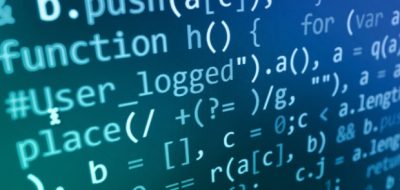My article in BUSINESS INSIDER published 3rdof May 2018.
According to various estimates, each of us takes daily from several dozen to several hundred decisions. We do most of them without reflection and automatically. They do not require special competences or dedication from us. They also do not carry any risk in the form of serious consequences. Is an outstanding or just average leader? What distinguishes them?
Making decisions in an organization in many situations is also based on routine and practically automatic activities. However, every leader during his career met with a situation in which he felt that the decision he made would have strong consequences for the organization. At such key moments, the leader’s ability to deal with the complexity of the problem and many factors that must be taken into account during decisive moments is revealed.
The most important choices made during management are influenced by: stress, previous experience of the leader and competences, his analytical skills, ability to control emotions, the ability to quickly process large amounts of information, the ability to think in a long way.
Each of these elements plays a role, but their sum is not completely measurable. Therefore, making key decisions would be called balancing between the area of knowledge and ignorance, intuition and reason, certainty and lack thereof. An illustration of this view may be the well-known sentence of the American theoretician of management, active in the 1980s.
Aaron Wildavsky showed a certain paradox, claiming that the leader of each organization will never have the full resource of necessary information, because some of them will die at the “entrance” to the organization, and some will be filtered inside. If so, he will try to reach the original sources of information they will overwhelm him. If he relies on the information that reaches him, he will be misled. The situation looks more like a stalemate.
It’s hard, so it’s good
All theoretical models depicting the decision making process – and there is a whole bunch of them, have many common elements. The simplest ones describe a significant sequence of events: we identify a problem, then analyze it, then we work out possible solutions, then we choose the best based on our priorities or possibilities. This type of simple descriptive models is appealing to me, in which there is a conviction that making decisions is nothing but a process of choosing from the available alternatives.
It is always accompanied by considering the benefits and costs that are associated with choosing one of them. But even in such a little complicated shot, it’s easy to find a critical moment. After all, the alternatives we see may have a similar cost and benefit account. And then nothing really matters except the experience based on intuition. But here I see an optimistic solution that describes Peter Drucker’s words well. According to him, you simply can not wait too long.
“In the case of an important decision, you can rarely get 100 percent of the information needed to make a good decision.” “If someone delays too long, he has another problem – he has to start all over again.” This is the dilemma of the hesitant decision maker, “said Drucker. Forbidden behavior of the leader, in the first place is procrastination or escape from the decision. In my experience, the lack of decision is often the worst decision possible.
A few simple treatments
Even in the most complicated moment – as a leader, I do not work in a vacuum, I do not start from scratch. If I implement the principles of open leadership, based on a partner dialogue with people, I can count on information from the environment. For help, verification of my erroneous assumptions, warning signals or manifestations of support. If I do not implement the authoritarian leadership model – the chances that my choices will not be a mistake, grow because they have a foundation in the general knowledge. In addition, in a modern organization I also have access to various data – including historical analyzes that allow me to assess the reasonableness of my decisions and their chances of generating positive effects.
It also makes sense for me to draw up a handy list of rules that will guide the leader at critical moments. For example, when deciding, I know that in the first place I decide on the actions that in my opinion will provide the best result based on what I know here and now (i.e., I cut off the process of infinite data multiplication). Secondly, I felt for traps – my thinking, my assumptions and inference. I pay attention to whether I am not mistaken about the causes and effects. Thirdly, as a rule and until the very end, I broaden my perspective, listening carefully to the opinions of others. Fourthly, I make sure that I have all the key information available on the given moment at a given moment.
Read more in the full article.
Link to the full article (in Polish)
Related articles:
– A machine will not hug you … but it may listen and offer advice
– Surviving in the digital age, future-proofing your business
– Fall of the hierarchy. Who really rules in your company?
– A hidden social networks lurks within your company. Find it!
– Your clients are already in the future, and where are you?










Tesla29
Hard to spot a real leaders